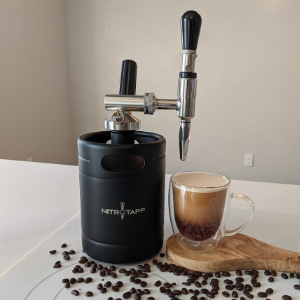
Your body weight should be the basis of your weight loss goals. You can determine this by measuring your weight at present, and then using 5%-10% as your target. Be realistic about your goals so you don't become overweight and improve your health. If you are 200 lbs, your goal is to lose 20 lbs. Don't lose too much weight to be considered underweight.
SMART goals are focused on outcomes
The measurable outcomes of SMART goals for weight reduction are described as "measurable outcomes". This allows you to create SMART goals. These should be challenging, but not overwhelming. A goal should be in line with your current priorities. It should also make it simple for you. Here are some tips that will help you create SMART goals to lose weight. Continue reading to learn how. The most effective way to lose weight is with SMART goals.

The process goals will guide you to achieving your desired outcome
You can establish process goals to help you achieve your weight loss goal. For reaching your goal weight, you can set daily, weekly or monthly goals. You can choose healthy rewards to help you reach each goal, even though they are not met. If you reach a particular process goal, set a daily, weekly or monthly reward. It doesn't matter if you are aiming for a new diet, exercise routine, or a different exercise regimen, setting process goals will help you get there.
Measurable objectives help you track progress
Setting goals that are measurable will help you track your progress in weight loss. For example, if you are trying lose 10 pounds, it is not useful to set a goal of walking 10000 steps daily if there is no fitness tracker. You can track your success by keeping track of the number of days you achieve this goal each week. And while it's important to set a goal that's realistic, it's even more essential to make it attainable.
Mini-goals make it easier to break down your long-term goals and create smaller, more manageable chunks
Setting mini-goals for weight loss is an excellent way to keep yourself motivated and focused on small chunks of your long-term goal. If you are looking to lose five or ten pounds, change your lifestyle, or make small but steady progress, it is a good idea to break down long-term goals and create mini-goals. You don't have to set mini-goals only for weight loss. These can be used for other goals, such as creating passive income streams, reading literary masterpieces and finding a good-paying job.

Track your progress with nutrition goals
Setting nutritional goals for weight reduction will help you keep track of your progress. Aim to achieve specific daily calorie targets, consult your doctor, then mark a point on your calendar. A time limit is a great motivational tool. A deadline will motivate you to lose weight faster. It is easy to make changes as your goal shifts. By using the Carb Manager, you can easily analyze your data. It is easy to see what you ate and when you reached each goal.
FAQ
What Amount of Weight Can You Lose In A Week?
The amount of weight you can lose depends on your current body fat percentage. The first thing to do is to calculate how much weight you want to lose and then find out what your BMI (Body Mass Index) is. Your BMI indicates how much weight we should lose to achieve our goal. If your BMI is 25 or greater, you're overweight. If your BMI falls below 30 you are considered obese.
Your BMI is calculated at 28.7 if your weight is 200. This would mean that you'd have to lose about 70 pounds in order to reach a healthy weight. To see if you're overweight, visit www.healthyminds.com/bmi/.
This formula can be used to calculate how many pounds you will lose each week once you have determined your BMI.
(Your Goal Weight - Current Weight)/BMI * 7 Number Of Pounds Lost Per Week
You would need to do 2 weeks of exercise to lose 50 lbs in one month. This is equal to 56 days. Divide that by 7 pounds per week. This works out at 8.3 pounds per week.
You could also try this calculator from www.weightlosscalculator.net. It provides an estimate of the number of calories you should consume each day to lose 12 pound per week.
What Amount Of Exercise Is Needed For Weight Loss?
There are many factors that influence the amount of exercise required to lose weight. These include your gender, age, body type and how heavy you are. However, the majority of people require at least 30 minutes of moderate exercise five days a week.
The American College of Sports Medicine recommends 150-minutes of moderately intense aerobic activity every week. It should be spread over three separate days.
For example, if you want to lose 10 pounds, aim to do 300 minutes of moderate-intensity exercise each week. This includes activities like jogging or running, swimming laps and biking.
If you're just starting out, consider doing 20 minutes of vigorous activity thrice weekly. These activities could include sprints and lifting weights.
Aerobic exercise can help burn calories as well as build muscle mass. Muscle burns more calories per calorie than fat. So building muscle can help you lose weight faster.
What should you eat while intermittent fasting?
Cut out carbs to lose weight. That means cutting out bread, pasta, rice, potatoes, and other carbohydrate-based food.
You'll also want to avoid eating too much protein because it keeps you full longer. So you won't feel hungry as often.
Focus instead on foods high in healthy fats such olive oil and avocado, as well as nuts and seeds. These foods will keep you full for hours after you eat them.
You should ensure you drink plenty of water. Hydration is key to burning fat.
You may find that you actually crave these foods when you fast. These cravings don't necessarily mean that you should give in. If you do, you could gain more weight than you lost.
You can avoid overeating by being mindful of how much water you consume each day. Instead of reaching for another snack, sip a glass of water when you feel hungry.
Although it might seem counterintuitive, this is actually proven to be a great way to lose weight. A study published in Obesity found that participants ate fewer calories when they drank plain water than sugary drinks.
In addition, drinking plain water helped reduce feelings of hunger. You can lose weight by avoiding sweetened drinks and sticking to water.
It doesn't take much to lose weight. Instead, try to make small changes in your life.
Try swapping out your usual breakfast sandwich in favor of a bowl o' oatmeal. Try swapping your afternoon cookie to a piece or fruit.
These easy swaps can add up and help you lose weight without spending hours in the kitchen.
Why lose weight before you reach 40 years old?
Senior citizens over 40 need to maintain their health, fitness and well-being. It is also crucial to find ways to keep fit throughout life. This means regular exercise, healthy eating habits, not smoking, moderate alcohol intake, and regular exercise.
It is also important for us to realize that our bodies will change with age. Our bones weaken and our muscles shrink. We can slow down the aging process by taking care of ourselves.
Being healthy and active as we age has many benefits. These include:
-
Better sleep
-
Improved moods
-
Increased energy levels
-
Lower risk of developing cancer
-
A longer life
-
More independence
-
Better sex
-
Greater memory
-
Concentration is key
-
Better circulation
-
Stronger immune system
-
Fewer aches and pains
Statistics
- Among women, the increase in metabolic rate was nearly 4%, or 50 more calories per day (14Trusted Source (healthline.com)
- One study in 9 active men found that HIIT burned 25–30% more calories per minute than other types of exercises, including weight training, cycling, and running on a treadmill (18Trusted Source (healthline.com)
- One 6-month study showed that simply doing 11 minutes of strength-based exercises 3 times per week resulted in a 7.4% increase in metabolic rate, on average. (healthline.com)
- A 12-week study in 20 women with obesity found that walking for 50–70 minutes 3 times per week reduced body fat and waist circumference by an average of 1.5% and 1.1 inches (2.8 cm), respectively (healthline.com)
External Links
How To
How to get rid of weight
One of the best ways you can lose weight is to exercise. Many people do not know how they should exercise. Exercise should include cardio exercises such as running, cycling, swimming, walking, etc., and strength training exercises such as lifting weights, making pushups, pull-ups, squats, lunges, etc. Combining these two types is the best way for you to lose weight. You can start exercising by getting some friends involved. You can either go to the gym or walk around your local area. Whatever type of activity you choose, make sure that you stick with it consistently. It is easy to lose track of your workouts when you first begin. Don't despair if things don't go as planned. Just keep at it!